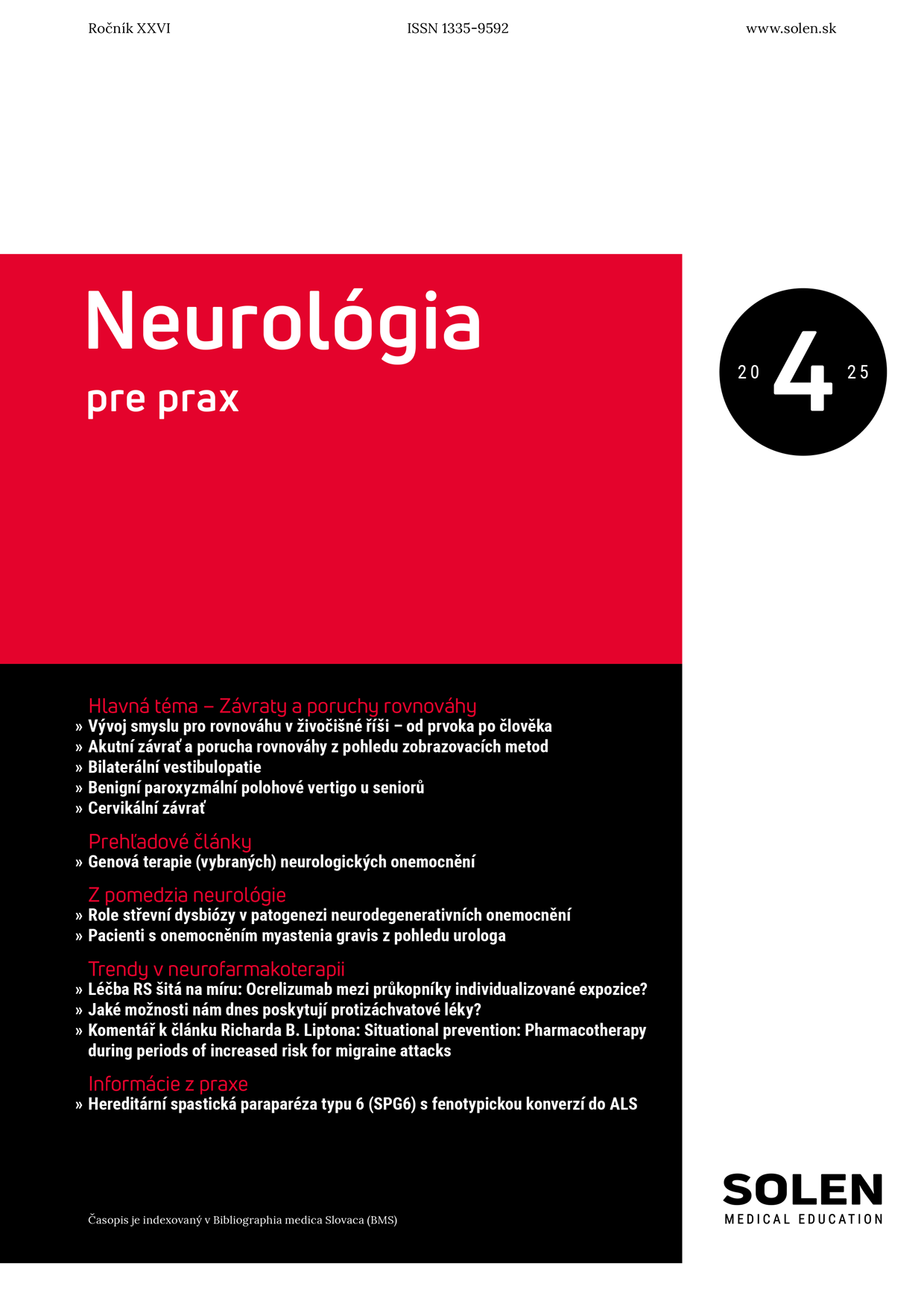Neurológia pre prax 6/2010
Familiární hemiplegická migréna
Familiární hemiplegická migréna (FHM) je vzácné autozomálně dominantní hereditární onemocnění. Jde o první typ migrény s aurou, kde byl prokázán genetický defekt na chromozomu 19 (FHM 1), vzácněji na chromozomu 1 (FHM 2) a chromozomu 2 (FHM 3). V typickém obraze musí být kromě migrenózní cefaley přítomno motorické oslabení a stejné postižení nejméně u 1 příbuzného. Motorické postižení může být charakteru až hemiplegie a může přetrvávat řadu dnů i týdnů. V léčbě se nedoporučují triptany pro jejich mohutný vazokonstrikční efekt, přednost se dává nespecifickým antimigrenikům. U těžšího průběhu je vhodná profylaxe, obdobná s léčbou migrény s aurou. V diferenciální diagnostice je třeba odlišit jiné typy migrény, cévní mozkové příhody, fokální epileptické záchvaty a některá vzácnější dědičná onemocnění typu MELAS a CADASIL. Sporadická hemiplegická migréna má stejný klinický obraz, liší se negativní rodinnou anamnézou. V závěru jsou přiloženy 2 kazuistiky: rodina s familiární hemiplegickou migrénou a případ ženy se sporadickou hemiplegickou migrénou se zdůrazněním diagnostických úskalí tohoto onemocnění. I když onemocnění HM má většinou dobrou prognózu s nízkou frekvencí a plnou reverzibilitou záchvatů, mohou některé prolongované záchvaty znamenat pro pacienty značný dyskomfort. Mutace genu ovlivňují uvolňování excitačních aminokyselin a serotoninových neurotransmiterů. Poznatky z oblasti molekulární genetiky (např. DNA analýza) mohou v budoucnu přispět k zavedení účinnější a specifičtější léčby, než je tomu doposud.
Kľúčové slová: familiární hemiplegická migréna, sporadická hemiplegická migréna, migréna s aurou, autozomálně dominantní dědičnost, mutace genu, chromozom.
Familial hemiplegic migraine
Familial hemiplegic migraine (FHM) is a rare autosomal dominant hereditary disease. It is the first type of migraine with aura in which a genetic defect on chromosome 19 (FHM 1) or, more rarely, on chromosome 1 (FHM 2) and chromosome 2 (FHM 3) has been shown. In addition to migraine headache, a typical presentation includes the presence of motor weakness and an identical impairment in at least one relative. The motor impairment may even be hemiplegic in nature and last for days or even weeks. Triptans are not recommended in the treatment for their potent vasoconstrictive effect; nonspecific antimigraine drugs are preferred. When the course is more severe, prophylaxis similar to that in the treatment of migraine with aura is appropriate. The differential diagnosis must distinguish other types of migraine, strokes, focal epileptic seizures and some rare hereditary diseases such as MELAS and CADASIL. Sporadic hemiplegic migraine has the same clinical presentation except for a negative family history. Also included are two case reports: a family with familial hemiplegic migraine and a case of a woman with sporadic hemiplegic migraine with an emphasis placed on the diagnostic pitfalls of this disease. Even though the prognosis of HM is mostly good with a low frequency and full reversibility of the attacks, some prolonged attacks may be associated with considerable discomfort for the patients. Mutations of the gene affect the release of excitatory amino acids and serotonin neurotransmitters. Knowledge from the field of molecular genetics (e. g. DNA analysis) may, in the future, contribute to introducing a more effective and specific treatment than the one used so far.
Keywords: familial hemiplegic migraine, sporadic hemiplegic migraine, migraine with aura, autosomal dominant inheritance, gene mutation, chromosome.

















